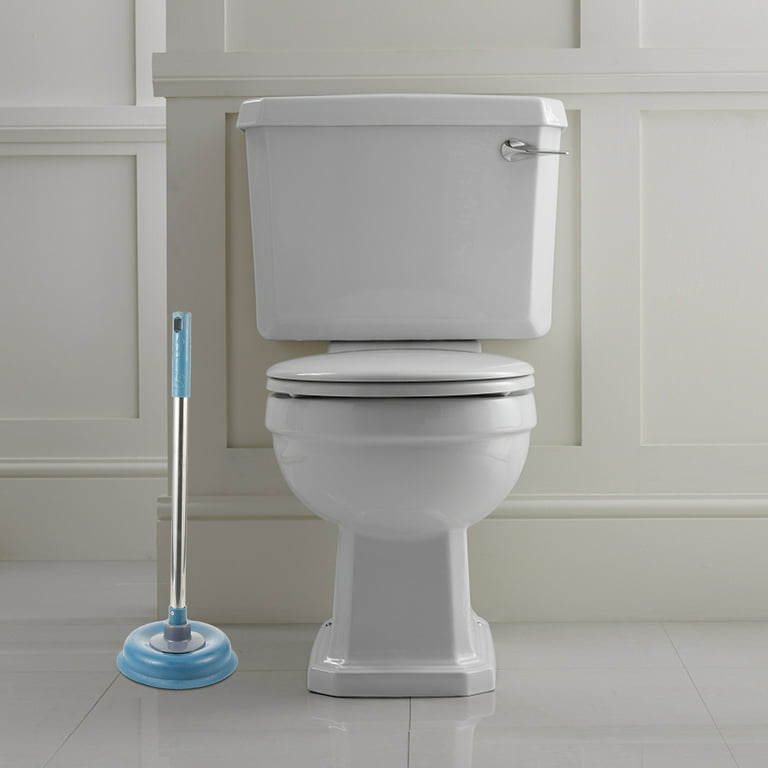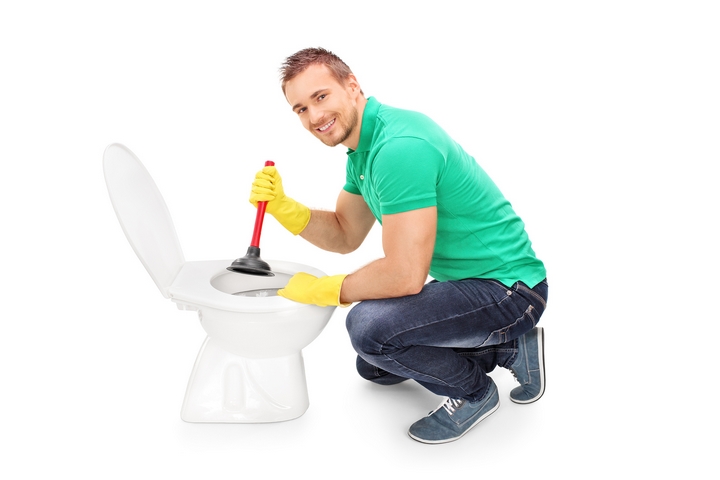Utilizing Plunger and Drain Cleaner: Successful Strategies
Utilizing Plunger and Drain Cleaner: Successful Strategies
Blog Article
In this article underneath you might get additional incredibly good insights in relation to How to Use a Plunger to Unclog a Toilet or Drain.

Intro
Appropriate maintenance of house drains is crucial for preventing obstructions and making sure smooth water circulation. Among the key devices in every homeowner's toolkit is the plunger, together with numerous drainpipe cleaners designed to take on stubborn obstructions effectively. This write-up discovers how to make use of bettors and drain cleaners effectively to maintain your drains streaming freely.
Section 1: Recognizing Bettors
Kinds of Plungers
There are a number of types of bettors available, each made for various types of drains and obstructs. The most typical types consist of cup bettors, flange bettors, and accordion plungers.
Just How Plungers Job
Plungers service the principle of producing stress and suction to displace clogs. When properly applied over a drain, they develop a vacuum that can pull out debris or separate obstructions.
Picking the Right Plunger
Choosing the appropriate bettor relies on the kind of drain and the nature of the clog. Cup bettors are perfect for sinks and bathtubs, while flange bettors are better suited for commodes as a result of their design.
Typical Errors with Plungers
Staying clear of these mistakes makes certain effective plunging: improper seal around the drain, inadequate force, and not clearing bordering particles.
Section 2: Using Plungers Efficiently
Preparation
Prior to plunging, guarantee the plunger covers the drain totally and develops a tight seal. Clear any visible debris around the drainpipe opening.
Technique
Beginning with mild diving activities to build suction. Boost stress gradually, using a steady rhythm. Repeat as essential up until the drainpipe clears.
Repairing Tips
If plunging doesn't function, attempt readjusting the seal, using oil jelly for a far better seal, or making use of a different sort of plunger.
Area 3: Comprehending Drainpipe Cleaners
Types of Drain Cleaning Company
Drain pipes cleaners can be chemical or enzymatic. Chemical cleansers use strong chemicals to dissolve blockages, while chemical cleaners use natural enzymes to break down organic matter.
Just How Drainpipe Cleaners Work
Chemical cleansers react with clogs to liquify them, while enzymatic cleaners break down organic materials like hair and grease without harming pipelines.
Security Considerations
Constantly wear handwear covers and eye security when using chemical drainpipe cleaners. Guarantee sufficient ventilation and follow supplier directions thoroughly.
Eco-Friendly Alternatives
Take into consideration using vinegar and baking soft drink or enzyme-based cleansers for environment-friendly choices that are more secure for pipelines and the setting.
Area 4: Using Drainpipe Cleaners Successfully
Application Techniques
Put chemical cleansers directly into the drain opening. Allow them to work for the recommended time before purging with hot water. Enzymatic cleaners must rest overnight.
Safety measures
Avoid mixing various types of cleansers, as this can generate poisonous fumes. Never utilize chemical cleansers in conjunction with a bettor, as splashing can take place.
Managing Stubborn Obstructions
For relentless obstructions, take into consideration utilizing a pipes serpent or calling an expert plumber to stop damages to pipes.
Final thought
Finally, understanding just how to use bettors and drain cleansers properly is necessary for maintaining healthy and balanced pipes systems. By choosing the right tools and techniques, home owners can deal with minor obstructions and prevent significant pipes concerns down the line.
How To Properly Use A Plumbing Snake To Clear Drains
When any drain clogs in our home arise, we tend to gravitate toward the plunger and little else. In cases where the plunger and its vacuum-created pressure are not able to clear clogs, many immediately move to harmful chemicals or simply call their plumber to fix the issue.
we’re happy to help with all drain cleaning needs and concerns. This includes informing you on a few other home remedies you may have at your disposal for minor to moderate clogs, one of which is the use of a plumbing snake. Many people have never used one of these before – let’s go over the steps to take when your drain clogs and you have a plumbing snake available.
Attempt Plunger Use
The first step here, as we noted above, should indeed be to grab your plunger when you notice a drain clog and attempt to resolve it this way. If you’re unsure how to use a particular type of plunger, our plumbers can answer any questions you have. If this doesn’t do the trick, however, you move on to the snake.
Locate And Prepare Snake
A plumbing snake is a metal or plastic device that’s generally about a quarter of an inch thick. It’s design with significant extensions, meant to reach down into your clogged drain and push the clog out. Snakes also contain drain augers that will latch onto and push stubborn blockages.
If your plunger doesn’t clear a clog, locate your snake and bring it to the drain in question. We also recommend keeping a bucket nearby to collect the clog once you pull it out, plus we’d advise wearing goggles and possibly protective gloves.
Feed Snake
Once you’re ready to go, feed the snake slowly down the drain, using the crank device it comes with to keep it moving until it finds the clog. Once this happens, much of the clog will be latched onto the coil so you can pull it out, while the rest will simply break up and flow downward.
Detach Debris
Remove the snake slowly from the drain, and once you’ve done so, pick off any debris that’s stuck to the coil. This is another area where wearing gloves is a must.
Flush Drain
Finally, take a few minutes to ensure the snake has done its job correctly. If you’ve been using it on a toilet, flush the toilet a couple times and make sure everything flows well. If you’ve used it on a different drain, flush it with some room temperature water.
https://www.mybuddytheplumber.com/blog/how-to-properly-use-a-plumbing-snake-to-clear-drains/

Application Techniques
Put chemical cleansers directly into the drain opening. Allow them to work for the recommended time before purging with hot water. Enzymatic cleaners must rest overnight.
Safety measures
Avoid mixing various types of cleansers, as this can generate poisonous fumes. Never utilize chemical cleansers in conjunction with a bettor, as splashing can take place.
Managing Stubborn Obstructions
For relentless obstructions, take into consideration utilizing a pipes serpent or calling an expert plumber to stop damages to pipes.
Final thought
Finally, understanding just how to use bettors and drain cleansers properly is necessary for maintaining healthy and balanced pipes systems. By choosing the right tools and techniques, home owners can deal with minor obstructions and prevent significant pipes concerns down the line.
How To Properly Use A Plumbing Snake To Clear Drains
When any drain clogs in our home arise, we tend to gravitate toward the plunger and little else. In cases where the plunger and its vacuum-created pressure are not able to clear clogs, many immediately move to harmful chemicals or simply call their plumber to fix the issue.
we’re happy to help with all drain cleaning needs and concerns. This includes informing you on a few other home remedies you may have at your disposal for minor to moderate clogs, one of which is the use of a plumbing snake. Many people have never used one of these before – let’s go over the steps to take when your drain clogs and you have a plumbing snake available.
Attempt Plunger Use
The first step here, as we noted above, should indeed be to grab your plunger when you notice a drain clog and attempt to resolve it this way. If you’re unsure how to use a particular type of plunger, our plumbers can answer any questions you have. If this doesn’t do the trick, however, you move on to the snake.
Locate And Prepare Snake
A plumbing snake is a metal or plastic device that’s generally about a quarter of an inch thick. It’s design with significant extensions, meant to reach down into your clogged drain and push the clog out. Snakes also contain drain augers that will latch onto and push stubborn blockages.
If your plunger doesn’t clear a clog, locate your snake and bring it to the drain in question. We also recommend keeping a bucket nearby to collect the clog once you pull it out, plus we’d advise wearing goggles and possibly protective gloves.
Feed Snake
Once you’re ready to go, feed the snake slowly down the drain, using the crank device it comes with to keep it moving until it finds the clog. Once this happens, much of the clog will be latched onto the coil so you can pull it out, while the rest will simply break up and flow downward.
Detach Debris
Remove the snake slowly from the drain, and once you’ve done so, pick off any debris that’s stuck to the coil. This is another area where wearing gloves is a must.
Flush Drain
Finally, take a few minutes to ensure the snake has done its job correctly. If you’ve been using it on a toilet, flush the toilet a couple times and make sure everything flows well. If you’ve used it on a different drain, flush it with some room temperature water.
https://www.mybuddytheplumber.com/blog/how-to-properly-use-a-plumbing-snake-to-clear-drains/

I was introduced to that write-up on Tips on How to Effectively Use a Plunger through a buddy on a different web blog. Remember to take a moment to distribute this blog if you appreciated it. Thanks so much for going through it.
Book A Service Report this page